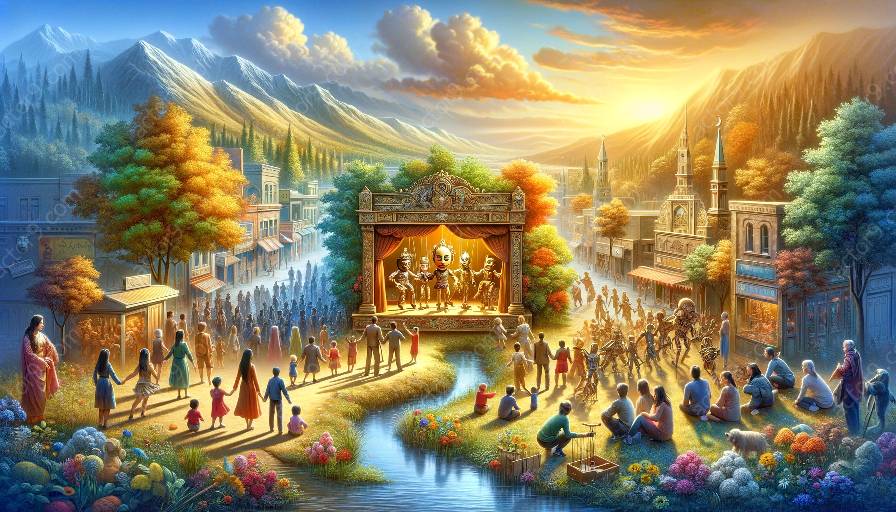Puppetry has been a fascinating socio-cultural artform that has evolved over centuries, influencing societies and cultural practices around the world. From its humble origins to its modern-day impact, the history of puppetry is a rich tapestry that intertwines with the fabric of human civilization.
Ancient Origins
The history of puppetry can be traced back to ancient civilizations such as Egypt, Greece, and China. In these early cultures, puppets were used in religious rituals, storytelling, and entertainment. The ancient Greeks, in particular, used puppets in their theatrical performances, laying the foundation for puppetry's later integration into the performing arts.
Medieval Europe
During the Middle Ages, puppetry flourished in Europe, often serving as a form of entertainment for both the aristocracy and the common people. Puppet shows were used to convey political satire, moral lessons, and popular stories, becoming an integral part of the socio-cultural landscape.
Asia and Shadow Puppetry
In Asia, puppetry took on unique forms, such as shadow puppetry in countries like India, Indonesia, and China. Shadow puppetry became intertwined with religious and cultural traditions, often depicting mythological tales and historical narratives, serving as a mirror of society and its values.
Modern Era
With the advent of modern technology and globalization, puppetry has continued to evolve, adapting to new mediums and platforms. Puppetry has found its place in contemporary theatre, film, and television, contributing to the socio-cultural discourse through innovative storytelling and performance techniques.
Socio-Cultural Impacts
Puppetry has left a lasting impact on society, transcending entertainment to become a powerful tool for social commentary, cultural preservation, and education. Puppetry has been used to address issues such as social injustice, environmental awareness, and historical narratives, creating a platform for dialogue and introspection.
Community Engagement
Puppetry often fosters community engagement, bringing people together for shared experiences and cultural celebrations. Festivals, workshops, and collaborative projects showcase the inclusivity and diversity that puppetry can offer, enriching the socio-cultural tapestry of communities worldwide.
Cultural Preservation
Through puppetry, cultural traditions and stories are preserved and passed down through generations, contributing to the preservation of heritage and collective memory. Puppetry becomes a living archive of cultural practices, ensuring that traditions and values are not lost to time.
Educational Tool
Puppetry has proven to be an effective educational tool, engaging audiences of all ages and backgrounds. It is utilized in schools, museums, and community centers to convey complex ideas in an accessible and engaging manner, making learning an immersive and enjoyable experience.
Conclusion
The historical evolution of puppetry as a socio-cultural artform is a testament to its enduring relevance and influence on society. From ancient rituals to modern-day performances, puppetry continues to captivate audiences and contribute to the socio-cultural fabric of the world, making it an integral part of human expression and experience.


























